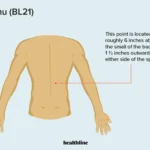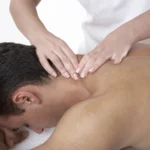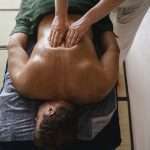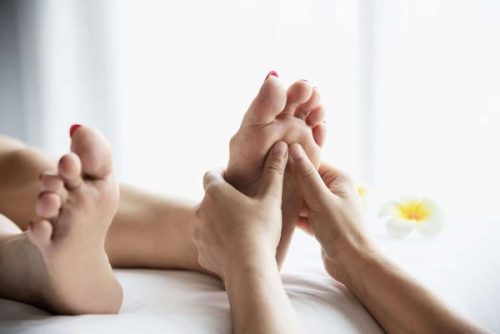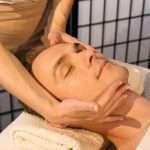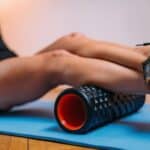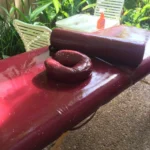Are you looking for an effective way to reduce swelling and soothe soreness in your swollen breasts? Massaging your breasts is a great way to relieve any discomfort and reduce swelling. In this article, we’ll discuss how to massage swollen breasts and provide some simple tips to help you get the most out of your massage. With the right technique, you can reduce swelling, soothe soreness, improve circulation, and even reduce the risk of developing mastitis. Read on to learn how to massage swollen breasts and get the relief you need.
Table of Contents
What Causes Swollen Breasts?
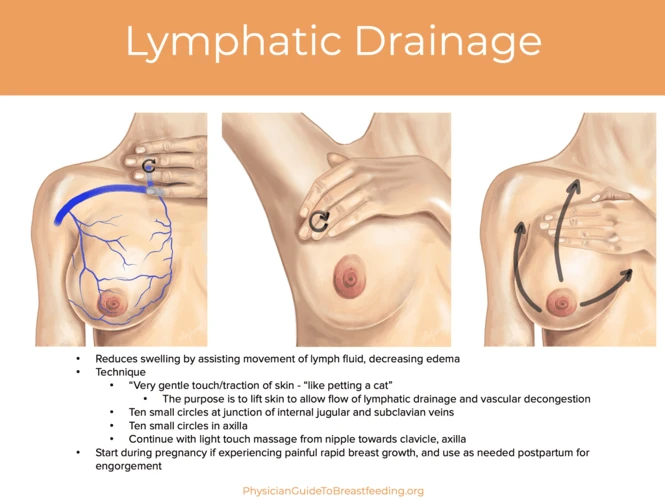
Swollen breasts, also known as mastitis, is a common condition that affects both men and women. It is usually caused by an inflamed milk duct or a blocked milk duct. Other causes of breast swelling can include hormones, injury, infection, pregnancy, and certain medications.
Common causes of swollen breasts include:
- Hormonal changes
- Injury
- Infection
- Pregnancy
- Certain medications
Hormones play a major role in breast swelling. During puberty, menstrual cycles, and menopause, hormone levels can fluctuate, causing swelling in the breasts. Injury, infection, and certain medications can also cause swelling. Finally, pregnancy can cause an increase in breast size and swelling due to the production of milk.
How to Massage Sore Breasts
Massaging the breasts can help reduce swelling and soreness. Here are some tips for how to massage swollen breasts:
- Gently massage the breasts in circular motions. Start from the outer edges and move inward.
- Apply light pressure with your fingertips and massage each breast for 1-2 minutes.
- Work your way down the breast toward the nipple.
- If you have any areas of soreness or tenderness, massage those areas more gently.
- Finish with a gentle massage of the nipples.
Massaging the breasts can help reduce swelling and soreness. However, it is important to talk to your doctor if you experience any severe or persistent swelling or pain.
Benefits of Massaging Swollen Breasts

- Reduce Swelling: Massaging your breasts can help reduce swelling by improving the circulation of fluids and decrease the accumulation of fluid in the tissues.
- Soothe Soreness: Massaging your breasts can help relieve the soreness and tenderness associated with swollen breasts.
- Ease Breast Pain: Massaging your breasts can help reduce the pain associated with swollen breasts.
- Boost Breast Health: Massaging your breasts regularly can help improve breast health by promoting the production of collagen and elastin, which can help improve the tone and texture of the skin.
- Relieve Stress: Massaging your breasts can help reduce stress and anxiety by promoting relaxation and reducing tension in the body.
- Increase Milk Production: Massaging your breasts can help increase milk production by stimulating the milk-producing glands.
Breast Massage Technique

Before Starting
It is important to make sure that the area is properly prepared before beginning the massage. Start by cleaning the area gently with warm water and soap. Make sure to dry the area completely before beginning the massage.
It is also important to use a massaging oil or cream to reduce friction. Choose an oil or cream that is gentle and nourishing to the skin. This will help the massage be more comfortable and help reduce swelling.
The Massage
Start the massage with gentle circular motions. Make sure to use a light pressure and not to press too hard. This will help to reduce any inflammation and help to soothe the area.
Move your hands in a circular motion up and down the breast. This will help to increase circulation and reduce swelling. It is important to keep the massage slow and gentle.
Finally, end the massage by applying a light pressure to the area. This will help to reduce any remaining inflammation and help to relieve any soreness.
Follow up the massage with a gentle moisturizer to help keep the area hydrated. Massaging swollen breasts can help to reduce swelling and soothe soreness. With the proper technique, it can be a great way to provide relief.
Essential Oils for Swollen Breasts
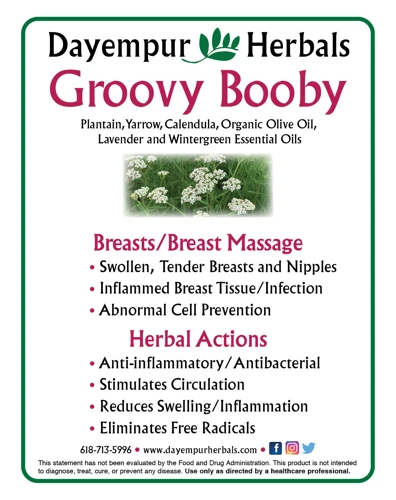
Essential oils are a great way to reduce swelling in the breasts. They are natural, safe, and have properties that can help reduce inflammation and promote healing. Some of the most common essential oils used for swelling in the breasts are:
| Essential Oil | Benefits |
|---|---|
| Lavender | Reduces inflammation, soothes skin, and helps with pain relief. |
| Chamomile | Helps to reduce swelling and inflammation, and has calming properties. |
| Rose | Soothes skin and helps to reduce inflammation. |
| Frankincense | Reduces inflammation, soothes skin, and helps with pain relief. |
These essential oils can be used in a variety of ways. They can be added to a warm bath, used in a massage oil or lotion, or applied directly to the skin. When using essential oils, always do a patch test first to make sure that you are not allergic to the oil.
Diet and Lifestyle Tips

| Tip | Description |
|---|---|
| Eat Anti-Inflammatory Foods | Include foods in your diet that have anti-inflammatory properties, such as ginger, turmeric, garlic, and omega-3 fatty acids. |
| Avoid Dairy | Avoid dairy products, as they can increase inflammation. |
| Avoid Caffeine and Alcohol | Caffeine and alcohol can both contribute to breast swelling, so try to avoid them. |
| Get Enough Sleep | Make sure to get enough rest and sleep, as this will help reduce inflammation. |
| Reduce Stress | Stress can also contribute to breast swelling, so try to reduce stress levels by taking time for yourself and engaging in relaxation or mindfulness activities. |
| Exercise Regularly | Exercise regularly, as this will help keep your body healthy and reduce inflammation. |
Other Treatments
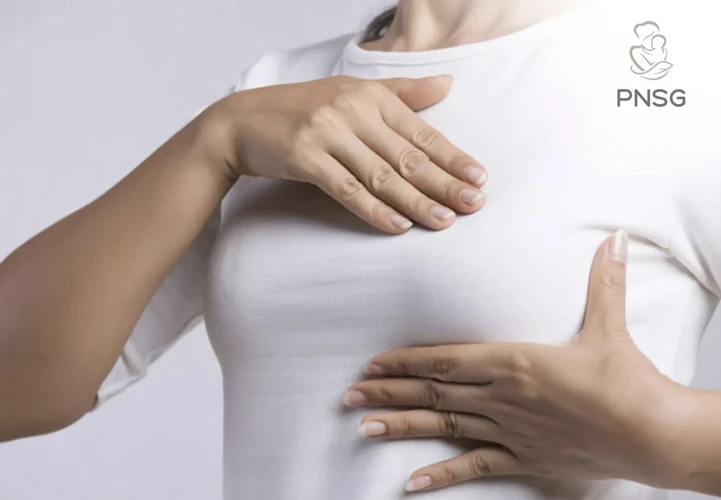
- Cold Packs: Cold packs can be used to reduce swelling and pain. Place a cold pack on the swollen breast for 10-15 minutes at a time. Use a cloth between the cold pack and your skin to prevent burns.
- Compressions: Compression garments can be used to reduce swelling and discomfort. They should be snug but not too tight. Wearing the garment for a few hours at a time can help reduce swelling.
- Topical Creams: Topical creams can be used to reduce swelling and soothe soreness. Look for creams that contain natural ingredients such as aloe vera or chamomile. Apply the cream to the affected area and massage gently.
- Acupuncture: Acupuncture can be used to reduce swelling and pain. Acupuncture is a form of traditional Chinese medicine that involves inserting very thin needles into specific points on the body. It is believed to help balance the body’s energy and reduce inflammation.
- Herbal Remedies: Herbal remedies can be used to reduce swelling and soothe soreness. Look for herbs such as chamomile, calendula, and comfrey, which are known to reduce inflammation and soothe skin. Make a tea with the herbs or create a topical ointment.
When to See a Doctor
- Persistent swelling or tenderness – If your swollen breasts remain swollen or tender for more than a few days after massaging or other home remedies, seek medical advice.
- Severe pain – Severe pain that persists in the breast or chest area, or is accompanied by other symptoms, should be checked out by a doctor.
- Lumps or bumps – If you notice any lumps or bumps in the breast area, it’s important to have them checked out by a doctor.
- Fever – If you have a fever along with swollen breasts, you should seek medical attention.
- Nipple discharge – Any discharge from the nipples, other than milk, should be checked out by a doctor.
- Unusual changes in the breast area – Any changes in the shape, size, or color of the breasts should be checked out by a doctor.
Frequently Asked Questions
What are the Benefits of Massage for Swollen Breasts?
1. Improved Circulation: Massage helps to promote better circulation to the breasts and surrounding areas, which can help reduce swelling.
2. Reduced Tissue Inflammation: Massage can help to reduce inflammation in the breast tissue, which can help to reduce swelling.
3. Improved Lymphatic Drainage: Massage can help to improve lymphatic drainage, which helps to reduce swelling.
4. Improved Comfort: Massage can provide relief from soreness experienced in the breasts due to swelling, providing improved comfort.
5. Improved Mobility: Massage can help to increase mobility in the breasts, which can help to reduce swelling and soreness.
What are the Best Techniques for Massaging Swollen Breasts?
1. Start With Gentle Pressure: Begin your massage with gentle pressure using your fingertips, while avoiding any areas of tenderness. Move your fingers in a circular motion, gradually increasing the pressure to a comfortable level.
2. Use Heat or Cold Therapy: Applying heat or cold therapy can help reduce swelling and soreness. For heat therapy, use a warm compress or a heating pad. For cold therapy, use cold compresses or ice packs.
3. Gently Knead the Breasts: Gently knead the breasts in a circular motion with the palms of your hands. This will help increase circulation, reduce swelling, and ease soreness.
4. Apply Pressure to Pressure Points: Applying pressure to specific pressure points can help reduce swelling and soreness. These pressure points can be found in the breast area, near the collarbone and in the underarm area.
5. Use Essential Oils: Essential oils such as lavender, chamomile, and ylang-ylang can help reduce inflammation and promote relaxation. Add a few drops of essential oil to your massage oil and massage into the breasts.
6. Use a Massage Oil or Cream: Massage oils and creams can help reduce friction and provide a smoother massage. Choose an oil or cream that is specifically designed for massage and contains natural ingredients.
How Often Should I Massage My Swollen Breasts?
It is recommended to massage your breasts as often as needed to reduce swelling and soothe soreness. Generally, massaging twice a day is beneficial for reducing swelling and discomfort. However, it is best to consult with a doctor or midwife to determine the best massage frequency for your individual needs.
Are there any safety precautions I should be aware of while massaging swollen breasts?
When massaging swollen breasts, it is important to avoid any sudden or jerky movements, as this can cause further discomfort. Go slowly and gently, and do not apply too much pressure. Keep in mind that the area is sensitive and the skin may be tender. It is also important to make sure that the massage is done in a downward motion, away from the breasts, in order to reduce tension and swelling in the area. Finally, avoid using any lotions, oils, or creams while massaging swollen breasts, as these can cause further irritation.
What Types of Products Are Recommended to Use While Massaging Swollen Breasts?
For massage of swollen breasts, it is recommended to use oil-based products like coconut oil, sweet almond oil, jojoba oil, avocado oil, and extra-virgin olive oil. These oils help to improve blood circulation and reduce swelling. It is also recommended to use a massage cream or lotion that is specifically made for sore breasts, as it will help to reduce inflammation and alleviate discomfort.
Conclusion
Massaging swollen breasts is a safe and effective way to reduce swelling and soothe soreness. It should be done gently and regularly, using circular motions and light pressure. Performing breast massage in combination with other home remedies can help provide relief from soreness and swelling. However, if the discomfort persists, it is important to see a doctor.
References
- CDC: Breast Swelling
- NCBI: Exploring the Massage Therapy Experience for Women with Breast Cancer Related Lymphedema
- University of Pennsylvania: Massage Therapy for Lymphedema Management
⚠️ Disclaimer:
This article is for informational purposes only and does not constitute medical advice. Always consult with a licensed healthcare provider or certified massage therapist before beginning any new treatment, especially if you have pre-existing health conditions or concerns.


